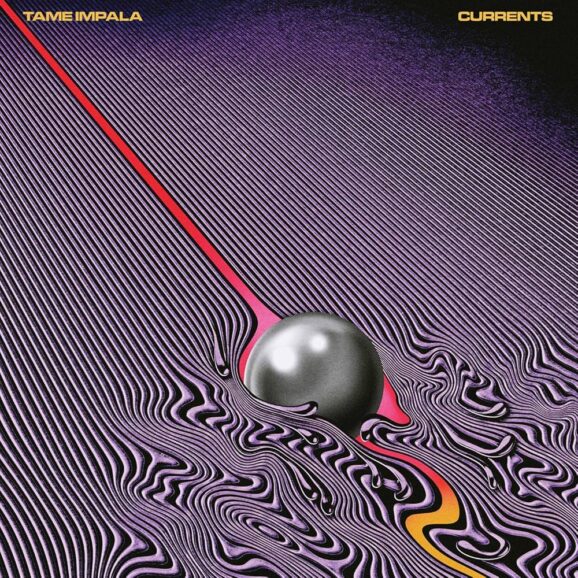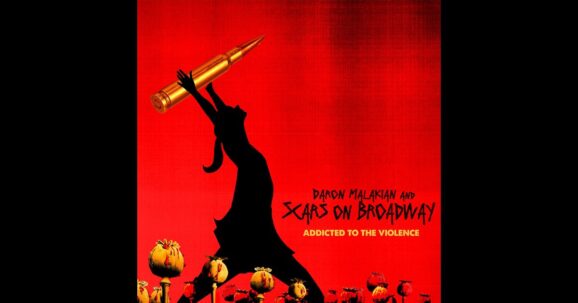Sooner or later, every great band faces a tricky evolutionary dilemma. At a certain point, growth means abandoning well-worn standards and celebrated hits, forgoing the oldies in the name of continued development. Georgia-born jamtronica outfit Sound Tribe Sector Nine has wrestled with this transition for years, repeatedly incurring the wrath of older fans while successfully attracting new ones. Now, in the wake of bassist and founding member David Murphy’s sudden departure, questions about STS9’s stylistic aims abound. Is the group poised to return to its loose, elemental roots? Is another seismic creative shift in store?
With a gentle, diplomatic touch, electronic juggernaut STS9 recently informed fans of an unthinkable personnel change, announcing the band would be moving forward without front man David Murphy. Murphy issued his own statement, citing creative and personal differences as reasons for the split. While news of the schism upset many of the Tribe faithful, it buoyed the spirits of some disillusioned STS9 followers, listeners who never accepted a few of the band’s controversial artistic choices. The mere mention of creative differences filled this faction with visions of a Tribe renewed, a funky rocket shedding soupy, synthesizer-drenched club music. To this disgruntled segment, a break with “Murph” and his perceived penchant for pounding electro signaled a possible return to the chakra-stimulating days of Sector Nine.
These half-baked hopes weren’t based on anything concrete. It’s hard to believe STS9, with its famous philosophy of groupthink, would ever submit to the whims of a single member. But even the remotest possibility of a slight reversion, real or imagined, awakened something in anxious onlookers, people yearning for a taste of vintage Sound Tribe.
“Realize Intention, explore space… With the intention of playing music in harmony with nature, our most recent explorations have led us to new practices and experiences in music…”
So begins an oft-repeated address, a fairly mystical mission statement that, in the minds of many, sums up the hallowed “glory days” of STS9. The original incarnation of the band, initially referred to as Sector Nine, looked and sounded like an order of instrument-wielding ascetics. A long-haired unit open to astrology, the Mayan calendar and other “far out” metaphysical matters, the outwardly granola ensemble used to amble onto a crystal-covered stage, hovering somewhere between Hare Krishna and Carl Sagan. In a 2001 Relix interview, guitarist Hunter Brown discussed the seeds of the band’s enduring fascination with “natural time,” a rejection of Gregorian artificiality. “A good buddy of ours, Raven, an elder who lived in North Carolina, was a big influence and explained the moon calendar. There’s a natural way to record time and the way humans have decided to do it is false.”
Of course, Sound Tribe’s interest in alternative calendars and harmonic convergences did not catapult it to stardom. The music did.
After a decade dominated by goofy H.O.R.D.E. jam bands, Sound Tribe Sector Nine emerged as something novel, refreshing. Rooted in funk, the five man team combined jazz, dub, dnb and gossamer electronica, occasionally throwing hip-hop into the mix. Unlike many of its jammy predecessors and contemporaries, STS9 didn’t bother with lyrics, the cringe-inducing pitfall so many poetically challenged improvisers grapple with. Instead, the focus was strictly musical. Stretching songs to the limit, the band did its fair share of sonic exploration, pushing favorites like “Orbital”, “Ramone and Emiglio” and “Breathe In” well past the fifteen-minute mark. In all, Sound Tribe was a new synthesis, never favoring electronic or organic, but moving seamlessly between the two extremes.
Alas, nothing escapes the formative pressures of change. As STS9 matured, lofty twenty-minute improvs and prayer samples became low priorities, taking a backseat to a growing obsession with compositional perfection. Widely regarded as the group’s seminal work, “Artifact” hit shelves in 2005, proving the fluid style of yore had begun to solidify. Tracks like “Somesing” and “Peoples” spelled doom for free-flowing, monastery-worthy musical meditations. Computerized elements moved to the forefront of STS9’s sound and, much to the dismay of some fans, the nightly jams slowly began to shrink.
The great transformation reached a head in 2008 with the release of Peaceblaster, the band’s fifth studio album. Devoid of gentle vocals or textures, the effort consisted of ominous, booming tracks, aggressive and seemingly static in live settings. Sound Tribe’s message of enlightenment, long silenced, was replaced by political calls for activism and conspiracy chatter. A lack of extended jamming, coupled with the collective’s newfound love of audio gadgetry, gradually drove longtime devotees away. The cry “Pick up your instruments!” echoed through STS9 fandom, and disenchanted voices started to grumble about a “lost” band. Undaunted, Sound Tribe continued to gain fans, young converts who didn’t care about the expanding roles of MIDI technology and laptops.
In the ensuing years, jams ebbed to the point of nonexistence. The crowds grew younger. Most of the Sector Nine acolytes who witnessed the band at its transcendental peak were long gone, following the Disco Biscuits, Phish, or some other act capable of satisfying their appetite for off- the-cuff musical risks. Yet, for every embittered exile, there was a bright-eyed youngster, a new arrival eager to fist pump at the increasingly demonstrative band’s urging. Crowd surfing even popped up at a show or two. David Murphy’s frightening bout with cancer only seemed to increase Sound Tribe’s resolve and closeness, powering the quintet through the “Great Cycle Spectacles,” a multi-media feast for the senses meant to mark the arrival of 2012. We now know things were amiss.
Murph and STS9’s joint announcements shocked even the most attentive STS9 watchers. Long the voice and face of the band, Murphy felt like an indispensable part of Sound Tribe. Moreover, the leaders of “the Tribe” always presented themselves as tightly interwoven brothers-in-arms– musical musketeers. Clearly, though, the members of STS9 reached some sort of impasse. Rampant speculation and rumors swirled, blaming everything from Murph’s supposed excesses to the bassist’s overgrown ego. Many felt the disagreement may have been purely artistic, a divergence of trajectories.
If Murph’s side projects are any indication, the bassist may be destined to produce punchier, potent dance music. If that is the case, where is Sound Tribe bound? Former STS9 “kids” everywhere are holding their breath, waiting for any hint of Sector Nine’s second coming.












9 Responses
Tribe has always been adamant about not sticking to one genre and never being branded this is what makes them so unique because they are courageous in trying new things. If you don’t like them being progressive take your hate with the “old” crowd who apparently know EVERYTHING. Read a few more interviews about a band before you come to such conclusions
This article beautfully outlines the progression of STS9’s sound. The author highlights stylistic changes throughout the band’s history without interjecting his own opinion. Questions from fans, old and new alike, are posed…what is to come of Murph, and of Sector Nine? No conclusions are drawn and the article leaves the reader wondering what this spring, a time of new beginnings, will bring.
well written and on point, thanks to the author
I’m smiling about this band for the first time in a long time. Skeptical the band can forge a return to 2002. But curious and interested to see a new path.
Haven’t seen a show since 2008. Looking forward for a reason to revisit S9.
I fully embrace the only constant in life, change! Cant wait to see what comes of it.
this article nails it… at least for this grizzled vet.
Great article. “hovering somewere between Hare Krishna and Carl Sagan” is a golden line.
Sums it up for me. Great writing about a favorite band. Listen to the fall 2015 tour if you’re courious as to where this band is going folks..truly excited to be a part of this and I haven’t been excited for sts9 in a long time. Thanks